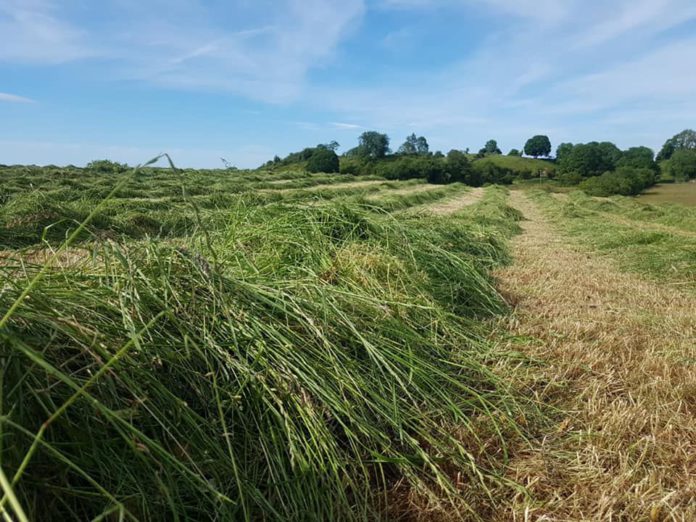In this article, CAFRE’s Richard Gibson discusses the use of a silage additive and provides 5 top tips for May.
Use of an additive
Depending on weather conditions, a silage additive may be useful this year in reducing waste.
Effective silage fermentation produces high lactic acid levels, reducing the crop pH. Proven silage additives can help this process.
Various additives are available, including bacterial inoculants, enzymes, non-protein nitrogen sources, acids, and sugar sources.
None of these products are a substitute for good silage making techniques, conditions, and management, but they can help make a good situation better.
May top tips
- Check silos and carry out any maintenance before silage making.
- Also, check that there is adequate storage in tanks to collect all effluent.
- As May is a peak grass growth month, focus on pre-grazing grass cover for your herd. Only graze a maximum of 3,100 kg DM per hectare covers. Remove higher covers quickly from the block to allow these areas back into the grazing block.
- Calibrate parlour and out of parlour feeders to ensure accurate feeding.
- Spray docks/weeds if conditions are suitable and they are at the right stage for control. If spraying silage ground for docks, generally allow an interval of at least 21 days between spraying and harvest. As the interval depends on you use, always read the label.
How sheep farmers can maximise the potential from grass
Last month, we featured an article on this topic from CAFRE’s Gareth Beacom.
The Agrisearch grass to lamb project demonstrates that there is significant room for improvement in terms of grass grown and used on sheep farms in Northern Ireland.
The project concluded that a well-managed grass system has the potential to supply 90-95% of a sheep flock’s nutritional requirements.
The project demonstrated lamb growth rates, drafting patterns and carcass data from both a 4-paddock system and an 8-paddock system.
It reported an “excellent” grass utilisation rate of 78% on average from the two systems.
Read more on this article.





